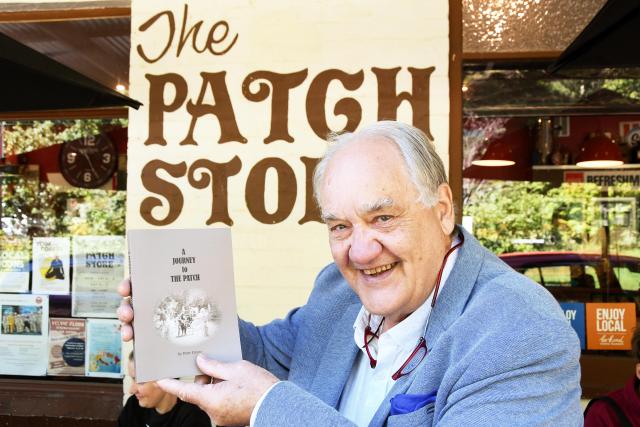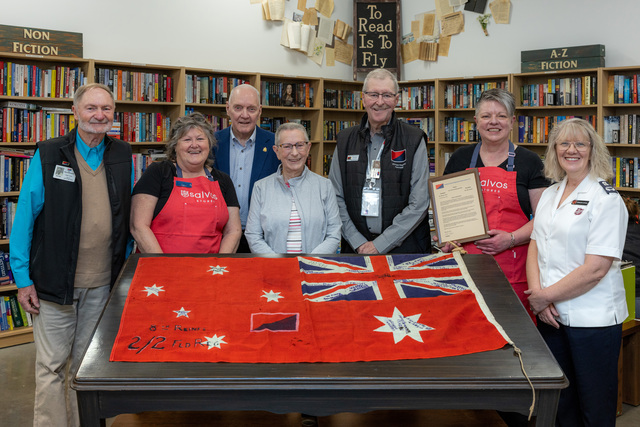Local author Peter Hayne’s debut novel is giving readers a glimpse into life in the 1890s.
A Journey to The Patch is based around Hayne’s grandfather, Joseph, who was one of the original settlers in the town.
“[In the] 1890s he had a block which is now mainly covering The Patch Primary School, so next door to The Patch Store, and he lived the rest of his life there,” Hayne said.
“He came out from Norfolk in the UK when he was 21, had a few issues at home which are in the book, but he was a young man who just needed to get out; it was the start of the agricultural revolution in England.”
Brought by the Colony of Queensland to work on a cane farm in Mackay, in the state’s north for 12 months, Hayne covers his grandfather’s journey down to Victoria, where he would settle in the Dandenong Ranges.
“While he wasn’t a person a child that went to school for any length of time he was very well educated and very well read,” Hayne said.
“I have a a copy of the letter that he sent home in 1899,” Hayne said, “It’s a beautiful letter, it’s 32 pages of what happened on the journey in his own handwriting, and it’s just beautifully written and it’s neat; it’s just a really good read on its own.
“I’ve been able to expand that from 32 pages to 300 [in my book]…we’re right at the start of the time when the Suez Canal was opened, he talks about things in that letter that were historically important but to him they were just new things and were in the days in Mackay before the white Australia policy was introduced in 1901, so the use of Islander Labor was a very strong issue at the time in Queensland, which I think sort of turned into to come down to Melbourne.
A book two and a half decades in the making, Hayne dug into the National Library of Australia’s Trove collection and The Argus from the 1890s, when the “catastrophic” depression, worse than the 1931 Great Depression, was battering Melbourne.
“We’d been through a Melbourne boom, and part of the Melbourne boom was extracting timber to build houses, and the timber was coming from right where I’m living in The Patch,” Hayne said.
“They were dragging logs out to Lilydale and building houses in the city. And then suddenly in 1893, we have this international depression. of capital from overseas just stopped on a day and banks started collapsing so a lot of things that had been programmed to happen in Melbourne just didn’t happen and people were out of work and of course once they’re out of work then the banks were selling up the houses because the mortgages weren’t being paid but there was nobody to buy them because there was no international capital so the values of houses started the plummet mortgages weren’t being repaid and banks started to collapse.
“In the early 1890s in Melbourne there were numerous bank collapses and it was just chaos in Melbourne and what they finished up doing was they subdivided forest land in the Dandenongs which we now that was Monbulk, Olinda, Belgrave, Kallista, The Patch all of those areas were subdivided and the boot makers and candlestick makers and bakers and butchers and all sorts of people who were out of work were put onto these land 10-acre blocks in The Patch and Monbulk and expected to farm and make a living.”
A photograph included in the book, taken over the top of his grandfather’s farm in 1900, shows three growing market gardens in working order; the Hayne farm, McAllister and Clarkson farms.
“Other farmers or the other settlers found it a very very difficult thing to do – the guys who could farm went ahead with it and they survived so those three families that I’ve mentioned were synonymous with the patch for the next 20 or 30 years.”
The response to the novel from his family has been “fantastic,” Hayne said, as has the response from people in The Patch to the book’s title.
“I was always going to call it ‘going home,’ that was the working title of the book, but I was convinced that we had to put The Patch into it,” he said.
“It was quite a good idea;It’s quite an attractive title, it attracts people to it. ‘Going home’ would have done the same thing.”
A Journey to The Patch can be purchased at The Patch Store, at 16 The Patch Road in The Patch.








